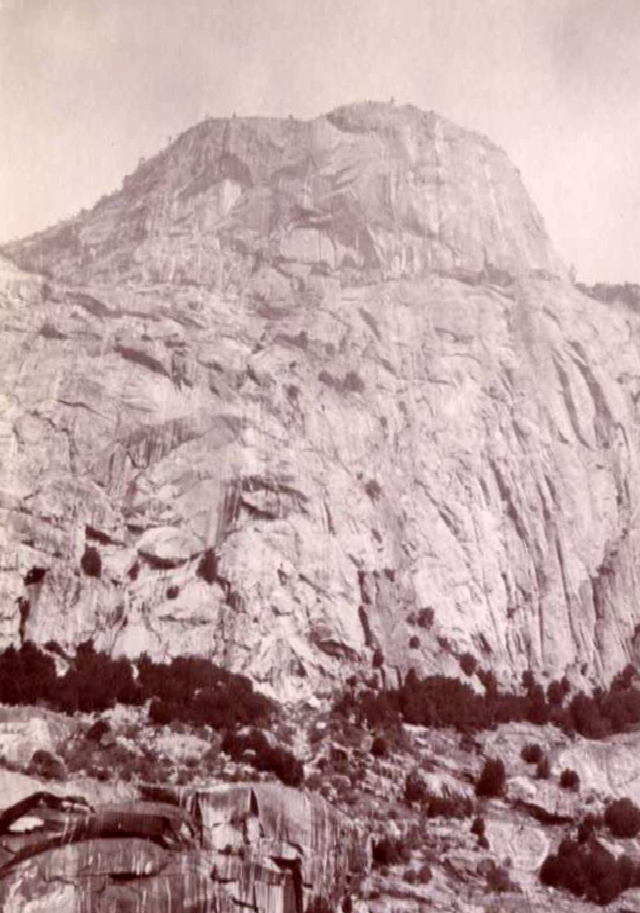 View of Hetch Hetchy Valley looking towards the falls of Fall Creek. Courtesy of the University of California, Riverside.
View of Hetch Hetchy Valley looking towards the falls of Fall Creek. Courtesy of the University of California, Riverside.
 View of the North Wall near the lower end of the valley. Courtesy of the
View of the North Wall near the lower end of the valley. Courtesy of theUniversity of California, Riverside.
Ancient glaciers carved the Hetch Hetchy valley out of the Sierra Nevada range over a few million years, cleaving their way through solid granite. In this way, Hetch Hetchy is like its famous sibling, the Yosemite Valley.
These glacial formations left a wide, flat floor flanked by towering walls of stone. This natural shape made Hetch Hetchy Valley an almost perfect vessel for holding mass quantities of water – if the mouth of the valley was sealed. The Tuolumne River coursed through Hetch Hetchy, a remnant of the prehistoric glacial flow that had given the valley its shape.
Hetch Hetchy’s history, before its water development, was not only geological: evidence of human inhabitants in Yosemite and its surrounding areas dates back over 8,000 years.
Hatchhatchie
 Chief Le-me in front of Um-a-cha. Courtesy of National Park Service.
Chief Le-me in front of Um-a-cha. Courtesy of National Park Service.
The name “Hetch Hetchy” itself was derived from a term used by the indigenous Miwok people, who called the edible grasses of the valley “hatchhatchie.” By the late 1700s, North America’s western coast had experienced sporadic settlement by colonizing Europeans, namely Spaniards. The Spanish established missions and pueblos throughout the Southwest, including the mission of San Francisco. The Miwok of the Sierras temporarily escaped the fates suffered by other native peoples (i.e.: exploitation and conversion by the Spanish), remaining undisturbed by those of European descent until the Gold Rush. Prospectors and mining operations had not penetrated the Sierras, at least initially. Most of the gold near San Francisco was exhausted in 1849, forcing both entrepreneurial individuals and mining companies higher upstream by 1850. In the foothills of the Sierras, the Ahwahnechee, of the Southern Sierra Miwok, were forced to compete with increasing numbers of miners and ranchers for land. The Ahwahneechee attempted to repel the newcomers, but were overwhelmed by the Mariposa Battalion, a California militia sent to clear the natives from the area. The militiamen burned villages and captured the chief of the Ahwahneechee, Tenaya, compelling their surrender. The remaining Ahwahneechee, along with natives of the surrounding areas, were forced out of their lands.
 Bessie Jacobs, Jessie Westfall & Lizzie Ronne, Ahwahnee, CA. Courtesy of National Park Service.
Bessie Jacobs, Jessie Westfall & Lizzie Ronne, Ahwahnee, CA. Courtesy of National Park Service.
 Indian Squalls, Yosemite Valley, California. Courtesy of National Park Service.
Indian Squalls, Yosemite Valley, California. Courtesy of National Park Service.
